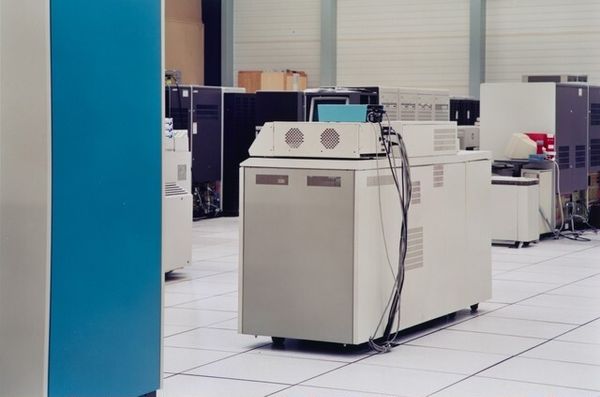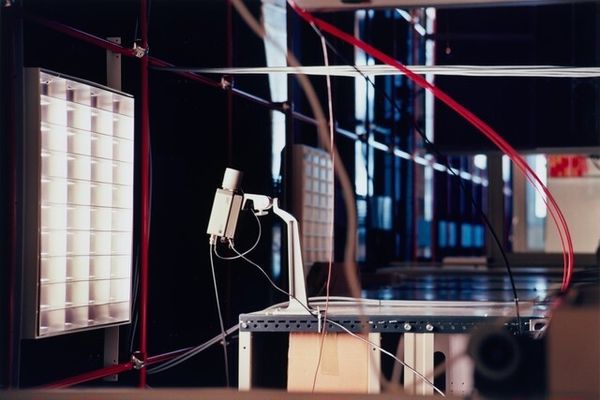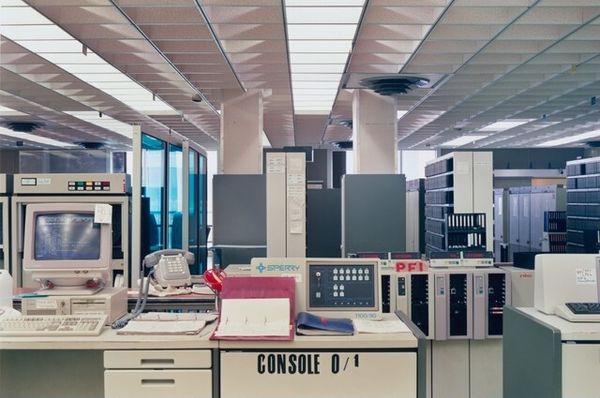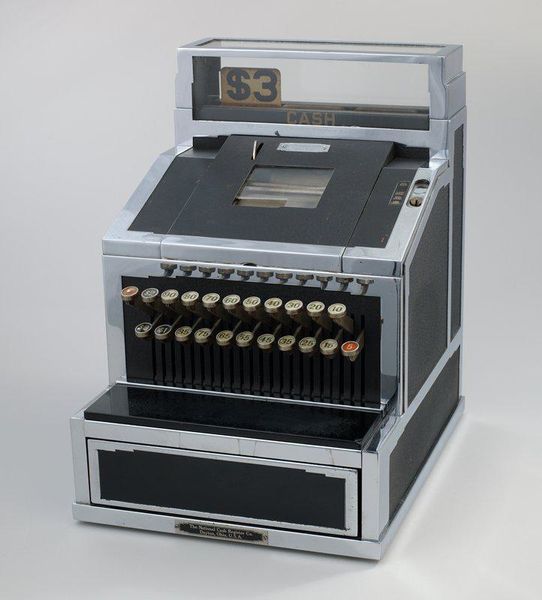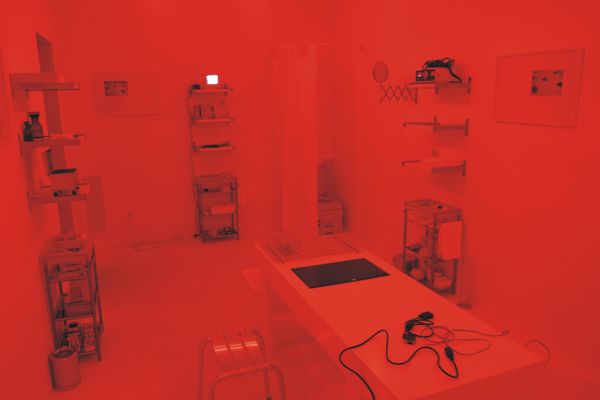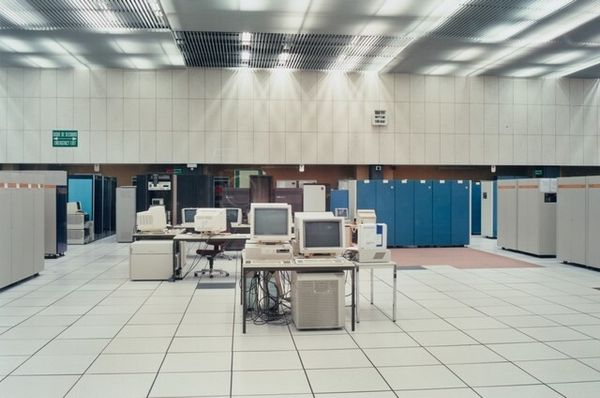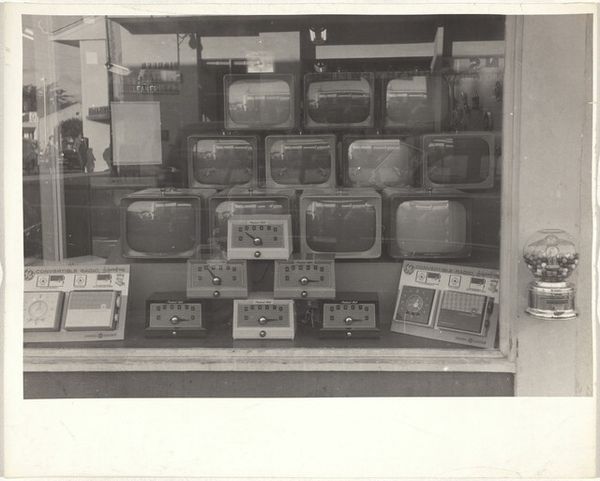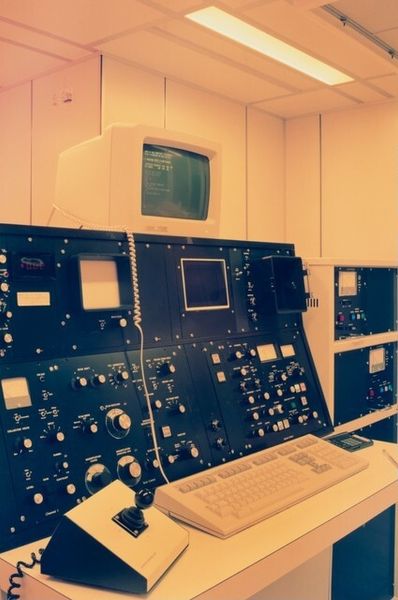
Copyright: www.guiadegrancanaria.org
Editor: Here we have Francis Naranjo's "Off," from 2005, an installation that seems to primarily use photography. Seeing these old, blank monitors all in a row is really striking. They feel like relics of a bygone era. What strikes you most about it? Curator: For me, the most compelling aspect is the commentary on obsolescence and consumer culture embedded in the materials themselves. These outdated monitors, likely mass-produced, represent the relentless cycle of technological advancement and its impact on labor and waste. Notice the brand name 'Fermax'; it speaks to a specific time and place. What kind of production realities would need to be in place for the assembly of this piece to even exist? Editor: That's a great point. I was focused on the look of the monitors, but hadn’t really thought about where they came from. Are you suggesting Naranjo is commenting on mass production and planned obsolescence? Curator: Absolutely. And consider the installation aspect – how does the physical arrangement, the way these objects are presented in space, contribute to the work’s meaning? The repetition creates a sense of uniformity and conformity, perhaps hinting at the pressures of consumerism. Consider where each material begins, what actions were required for their arrangement, and where those things go when "Off" is switched off. Editor: So it is more than nostalgia, then, which is how I first perceived it. It is actually addressing the whole lifecycle of the materials. I'm not sure I would have picked up on that without your insights into the manufacturing and labor aspect. Thanks! Curator: Indeed. It is about considering art as being firmly rooted in specific actions and networks of production. That makes it so much richer than surface level engagement.
Comments
No comments
Be the first to comment and join the conversation on the ultimate creative platform.
